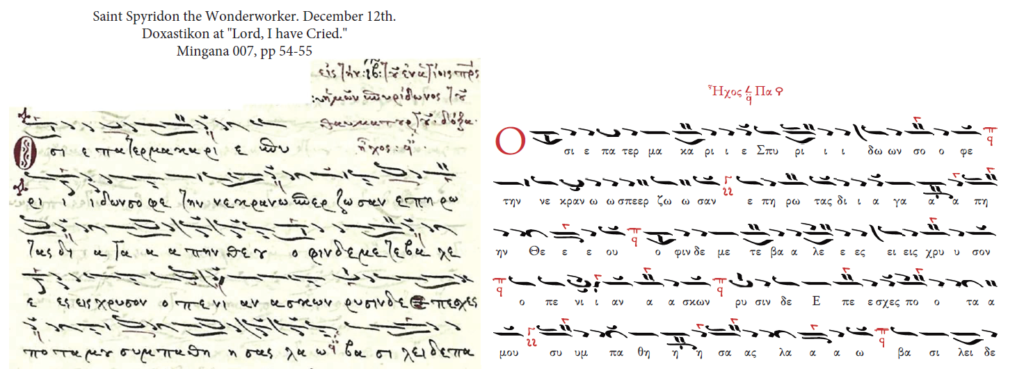I’ve been thinking a lot lately about what makes a Byzantine musical composition work. It’s something I do a lot – as a composer, I’m constantly studying the works of other composers much better than I (such as Petros the Peloponnesian) in order to understand the internal logic of their work. What makes their compositions tick? How do the elements of a given piece – rhythmic structure, blending of musical phrases, use of text-painting, tetrachordal interplay, overarching musical ebb and flow – come together to create a composition that simply works… or doesn’t, as the case may be? Is it simply intuition built on experience? Or is there a more mathematically describable logic?
For years, I’ve been studying Byzantine music through the lens used by nearly every practitioner of the Psaltic Art: Byzantine notation, or, more precisely, the New Method of Analytical Notation – a form of Byzantine notation distilled in 1814 by the Three Teachers (Chrysanthos of Madytos, Gregory the Protopsaltis, and Chourmouzios the Archivist) from a previous, and much more complex, form of the notation. The New Method became the prevailing musical notation system of Byzantine Chant for a reason – it was simply easier to learn, and more effective for teaching. But there was also a lament among practitioners of Byzantine chant that adoption of the New Method would be detrimental to certain aspects of the Psaltic Art, and one of those aspects was composition. Sure enough, the years after the Chrysanthine Reform saw a general decline in the quality of compositions produced.
So, in order to better understand the musical logic of the great composers, I have begun studying their works in the Old Notation (a colloquial term for pre-Chrysanthine Byzantine notation) and cataloging my observations. I am enthusiastic about the ramifications this study will have for my own compositional work (and my ability to teach others), as I have already made a number of observations of musical factors of which I was previously unaware – hints of a sort of musical “grammar,” if you will, informing the order of musical phrases in a given composition.
Stay tuned.

Vespers Doxastikon of Saint Spyridon the Wonderworker, in both the Old Notation (left) and the New Method of Analytical Notation (right)
